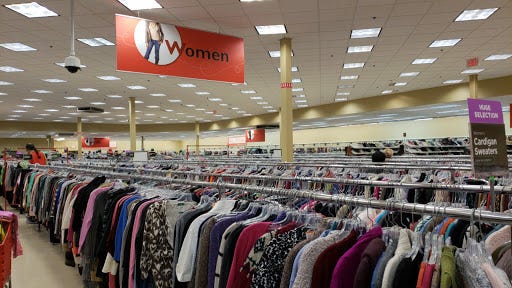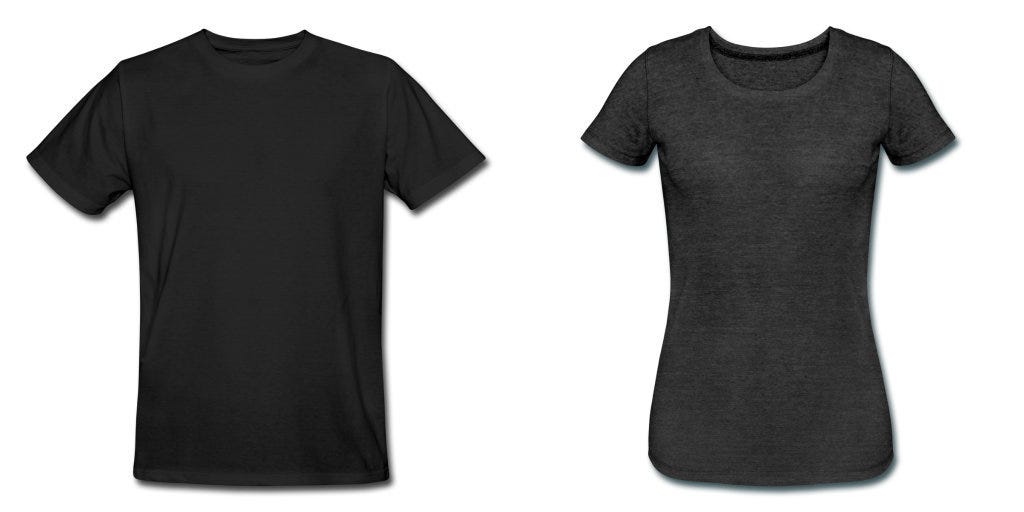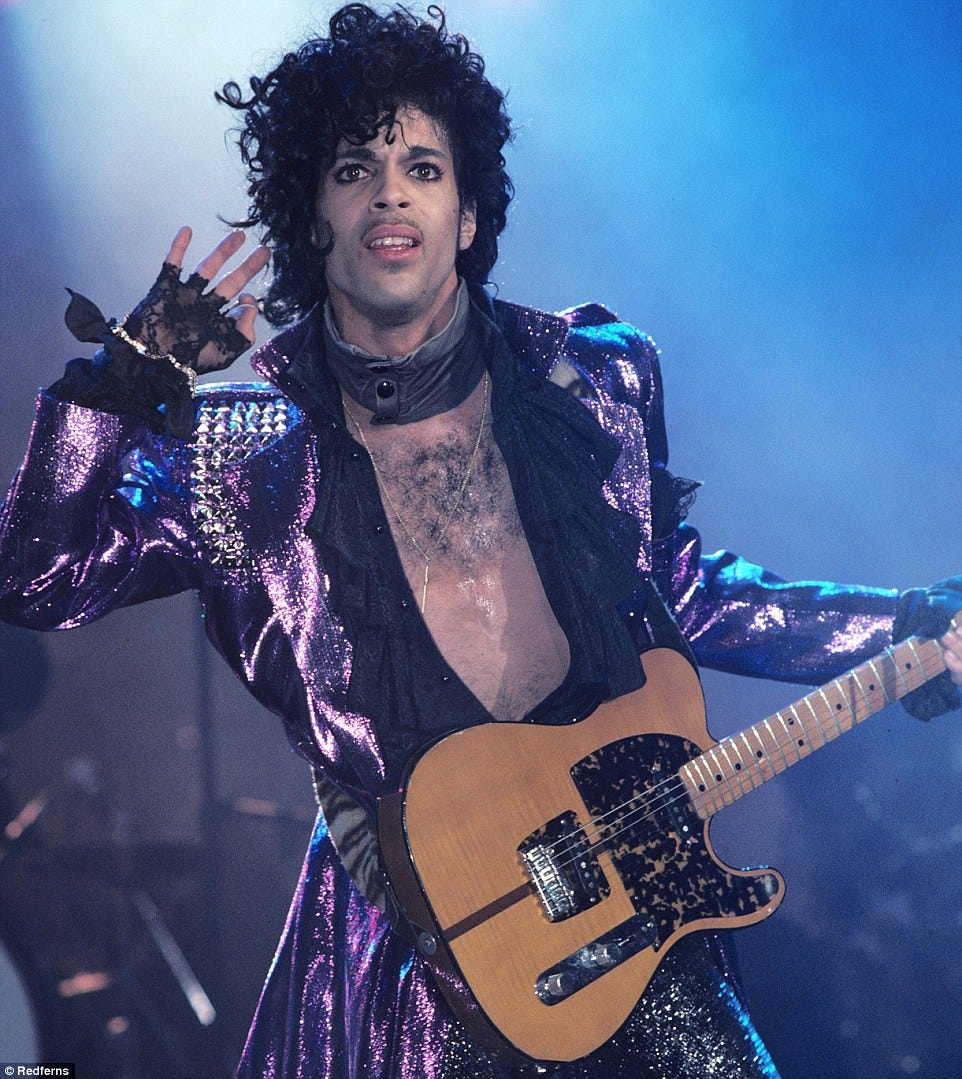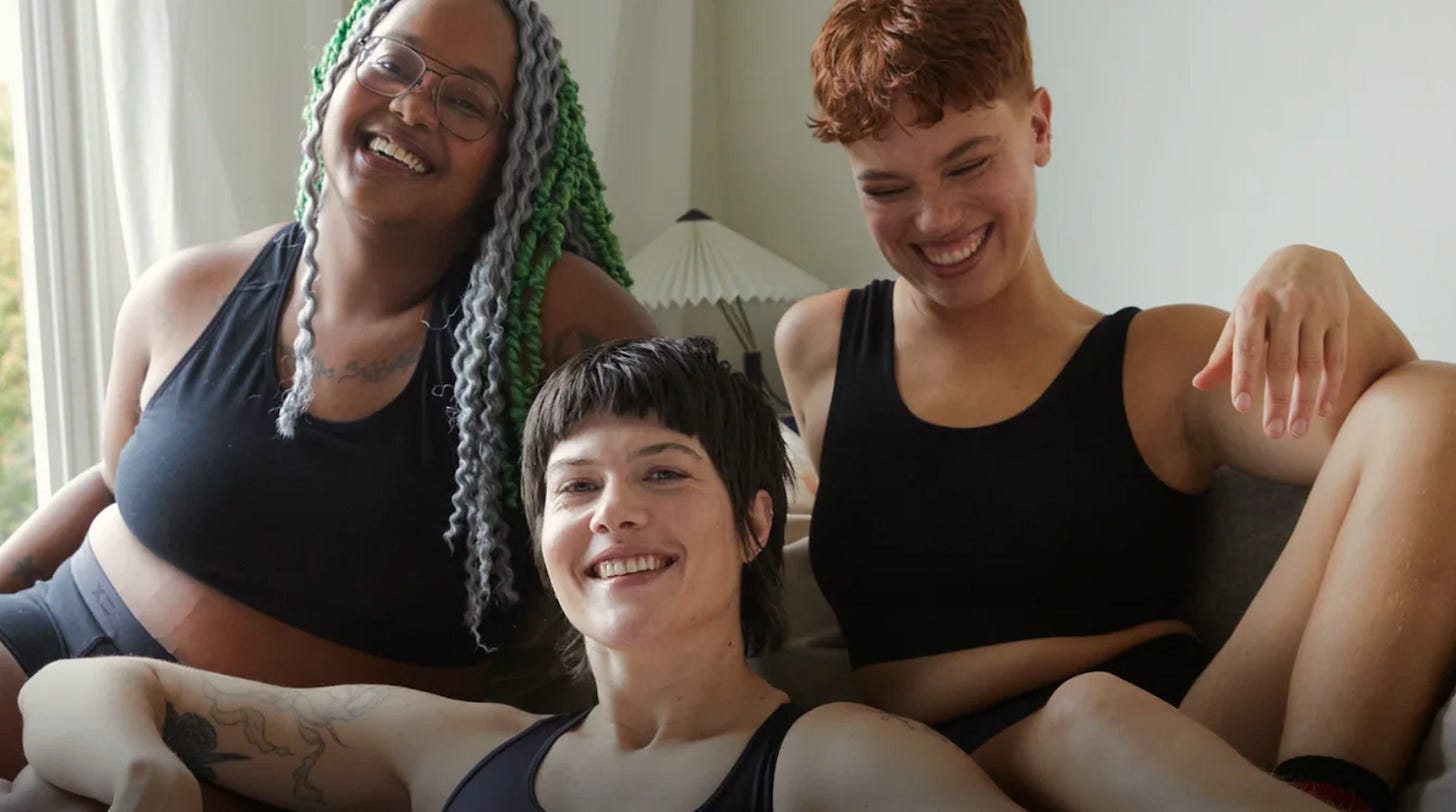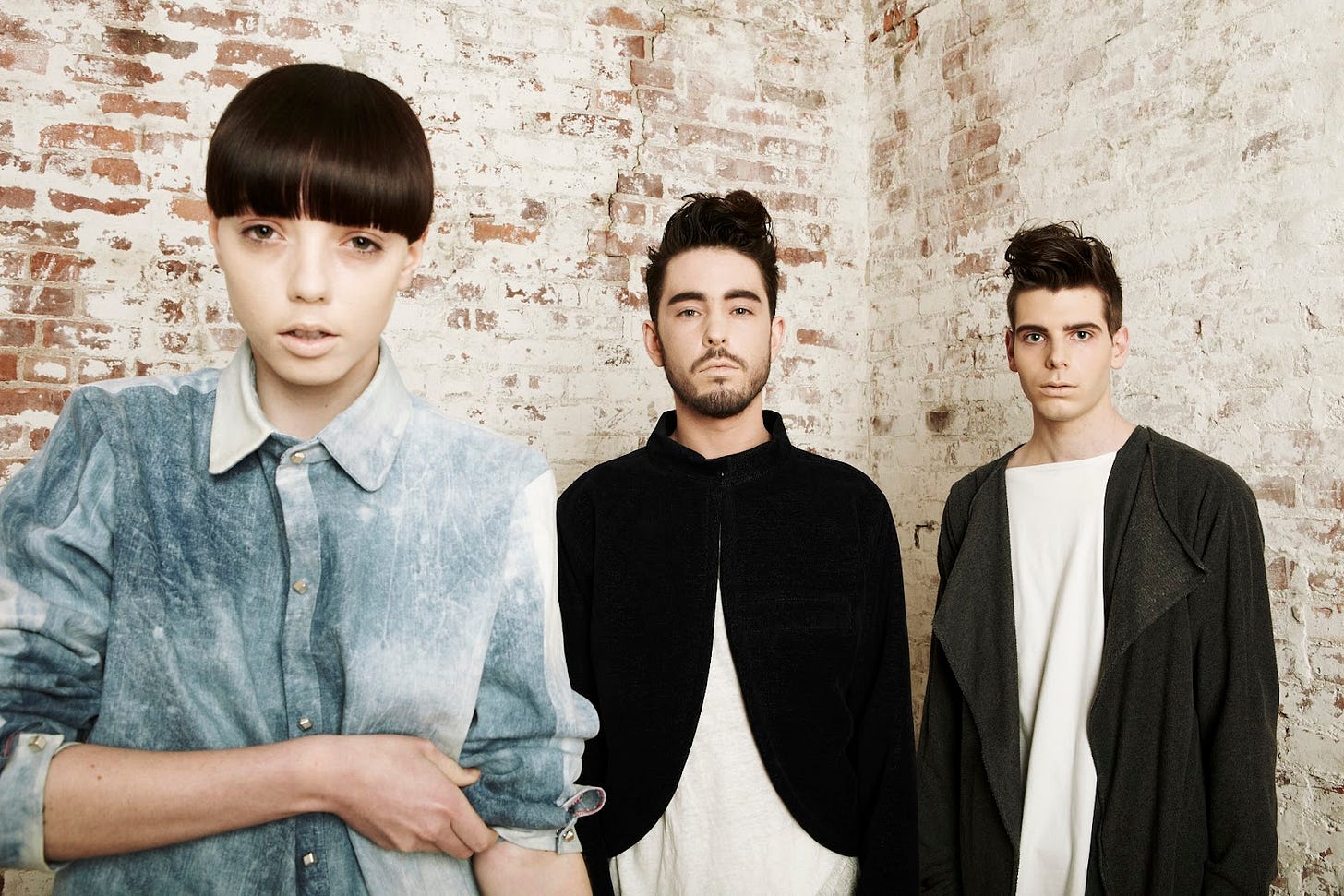Embracing Fluidity in Fashion
Exploring the use of gender labels on clothing. Is there a need to split garments into two binary genders?
Today’s insightful article, penned by Simone, explores the topic of gender inclusivity in the fashion industry. In this thought-provoking piece, Simone delves into the complexities of challenging traditional gender norms and advocating for more gender-neutral clothing options. Through meticulous research and articulate analysis, Simone navigates through the nuances of gender identity within the realm of fashion, prompting readers to consider their stance on this evolving topic.
In a world where representation matters, this article serves as a catalyst for introspection, urging us all to critically examine our perceptions of gender within the fashion landscape.
How do you perceive the role of gender in clothing? Join us as we embark on this collective exploration, thus paving the way for a more inclusive and accepting future.
Happy reading,
Amarissa
When you walk into a store, it’s hard to miss the separation between merchandise labeled “Women” and “Men.” The sections boast similar color schemes and offer a variety of clothing items, from sweaters to t-shirts to jeans, with only slight variations. But why the need for such division?
The Fashion Industry has made strides in offering more inclusive options, yet there remain barriers hindering its complete evolution. While there’s a plethora of options for cisgender women and men to express themselves within traditional gender norms, the industry still lacks options for those exploring gender nonconformity and fluidity. It’s essential that neither clothing tailored for cisgender individuals nor gender-neutral apparel dominates the market.
With hundreds of gender identities beyond the binary of female and male, it’s challenging to cater to every non-conforming expression. However, the fashion industry can move towards breaking away from the constraints of binary genders and their stereotypical style expressions.
Origins of Gendered Clothing
The concept of gendered clothing is widely accepted as normal in the West or North America. However, it’s important to note that not every culture shares this perspective. Gendered clothing lacks a universal basis and is not inherently necessary.
In ancient Hindu literature, individuals outside the male or female binary were acknowledged as Hijras. Modern Indian law recognizes and validates both Hijras and transgender citizens, in part due to their mention in old texts alongside Shiva, a prominent Hindu deity. According to a journal by Abby Lee Hood, references to Shiva, one of which describes a form merging with his wife to create Ardhanari, an androgynous figure, were diminished by British colonization.
Indigenous American communities also acknowledged genders beyond the binary, notably through the recognition of two-spirit members. Four distinct genders were prevalent, including male, female, two-spirit male, and two-spirit female (Hood). Tribe members who identified as two-spirit had special roles in the community, from healing to wearing specialized clothing. Two-spirit Indigenous Americans participated in same-sex relationships and were claimed to have luck in love (Hood). While this community includes native Westerners, they did not have the binary-based ideology of the settlers colonizing the West.
Throughout European history, women’s and men’s clothing bore striking similarities. Tailored by craftsmen, these garments revolved around tunics, with the only discernible difference being the price tag. Clothing divisions were primarily based on wealth or social class rather than gender. It wasn’t until the 17th century when a trend emerged in France to accentuate women's attire, dubbing it “fashion,” and sparking a division in clothing styles.
This cultural shift associated tailoring predominantly with men’s clothing, leading to the gendering of apparel. The trend from France quickly spread to North America. Emilia Bergoglio, in her article “Degendering Fashion: The Origins of Gendered Clothing,” highlights that the emergence of the binary paradigm led to the strict enforcement of distinctions between “man” and “woman,” with many countries persecuting individuals who defied these norms through cross-dressing.
Non-Inclusive Labels
Why should individuals face persecution for cross-dressing or adopting styles traditionally associated with a different gender, especially when modern labeled clothing is essentially redundant? A long-sleeve shirt found in the men's section is simply labeled as a “long-sleeve shirt,” whereas the same garment would be categorized as a “blouse” in the women's section. The fundamental disparity between “women’s” and “men’s” clothing lies solely in their tailored fit.
Women's clothing is typically tailored to contour around the body of individuals assigned female at birth, accommodating features such as breasts and providing minimal room in the groin area, assuming genitalia. Conversely, men’s clothing is crafted with considerations for the absence of breasts and features extra room between the pant legs to accommodate genital space. What this distinction does not include, however, is that individuals of the same gender will not fit into the same silhouette of clothing, because everyone has different body types.
Some women have undergone medical procedures such as bottom surgery, while others have not, and some may not have been assigned female at birth. However, the typical “women’s” section of retail stores overlooks the existence of these women and fails to acknowledge the reality that not all women have the same genitalia. Similarly, the ignorance extends to “men’s” clothing, where a shirt labeled as “men’s” may not accurately represent every man due to factors such as medical procedures like top surgery or being assigned a different gender at birth. This assumption that an entire identity conforms to a singular body type is a byproduct of the binary reinforcement of gender norms.
Challenges in Traditional Gender Labeling
The fashion industry's adherence to the gender binary reinforces stereotypical expectations of how individuals of a certain gender should express themselves through clothing. While this binary framework can sometimes assist transgender individuals in finding styles that affirm their identity, it can also be limiting. Genderfluid individuals, however, may find euphoria and empowerment in selecting pieces from both the "women's" and "men's" sections, creating unique and authentic expressions of themselves. Ideally, gendered labels should prioritize inclusivity, but often they perpetuate harmful and restrictive standards instead.
Individuals navigating their gender identity may want to dress in a certain way that may not align with the clothing labeled for their gender. A person may identify as a woman but prefer to dress in masculine clothing, or vice versa. This can trigger feelings of gender dysphoria, particularly when items traditionally associated with one's gender are exclusively found in designated sections. This can lead to insecurity and discomfort with one's identity if one feels pressured to conform to stereotypical gender norms. In this way, the division between clothing sections transitions from being a helpful organizational tool to enforcing damaging clothing binaries.
It can also present challenges for transgender individuals who wish to shop in both the "women's" and "men's" sections but encounter ill-fitting clothing and feel unwelcome by other customers or retail employees. In my search for personal anecdotes from individuals who have faced gender dysphoria or discrimination in shopping environments, I discovered a multitude of responses, numbering in the hundreds and thousands. This prevalence underscores the widespread and shared experiences of those grappling with challenges in the retail setting.
Personal Accounts of Shopping Dysphoria
A transgender Reddit user revealed that she enjoys going thrift shopping, but usually feels dysphoric. The items in the women’s clothing aisles don’t fit her and she worries that “people are staring at [her] or judging [her] for being in certain aisles or holding certain articles of clothing.” Transwomen should be able to shop in the “women’s” clothing aisles without a sense of discomfort.
Also on Reddit, a transgender man posted a discussion titled “Anxiety/Dysphoria when clothes shopping while [pre-testosterone.” In the report, he admitted to being “extremely nervous someone was gonna clock [him] as trans since [he’s] still [pre-testerone] and wasn’t binding.” The user states that trying on clothes makes him feel dysphoric since the silhouettes don’t fit the way he would like them to.
Nonbinary individual Christina McCann, in an interview with CNBC, reveals their approach to shopping by navigating between the "men's" and "women's" sections based on the clothing category they are interested in. McCann has primarily transitioned from shopping in-person at brick-and-mortar retailers to purchasing secondhand items on platforms like Depop or Poshmark. By opting for vintage goods online, they can search for items based on fit and size rather than adhering to traditional gender categories.
The binary perception of gender often imposes rigid standards and expectations onto individuals identifying as men or women, creating an overwhelming sense of conformity within these labels,
However, being a man or a woman is not inherently tied to specific rules or guidelines, as no gender identity holds superiority over others. It's crucial to recognize that all gender identities deserve equal recognition and respect, without any one identity being considered the "norm."
Shopping for and exploring one's style should be an enjoyable and empowering experience, free from dread or anxiety. Fortunately, some retailers are leading the way by creating inclusive and welcoming spaces for genderqueer and non-conforming consumers. Let's delve into how these retailers are pioneering gender-fluidity in the world of fashion.
Companies Embracing Gender Nonconformity
While the number of companies embracing gender nonconformity remains relatively small compared to those that are not, any progress in this direction is significant. Among these trailblazers is the queer and women-founded brand, Tomboy X, which offers an inclusive range of undergarments. Since its opening in 2013, Tomboy X has been dedicated to serving underrepresented markets, prioritizing sustainable design, and eschewing gendered labels in favor of focusing on fit, quality, and purpose. A major milestone in the brand's journey occurred in 2019 with the introduction of gender-affirming undergarments and safer alternatives to binders for transgender customers.
In a slightly higher price range, we have Both&. This brand was built to motivate transmasculine, nonbinary, and gender non-conforming communities to find joy in their expression and feel secure in their identities. Binaries do not exist at Both&, only the goal of creating the most euphoric masculine fit possible. The company has even collaborated with Bella Ramsey, a genderqueer actor and advocate for gender inclusivity, whose typical masculine presentation aligns with the silhouettes produced and distributed by Both&.
Luxury up-and-coming fashion brand NotEqual, founded by designer Fabio Costa, is one of the few high-end labels producing gender-neutral garments. The company is unconventional and creative, with each piece having unique tailoring specific to the customer. None of the designs feature gendered labels, as the brand aims to challenge conventional notions of gender identity and cultural norms through its modern silhouettes. Costa, the founder, is committed to evolving the brand's functional and versatile pieces to suit any lifestyle.
An Inclusive Future
To pave the way for a more inclusive future, retailers should prioritize providing gender-neutral apparel, and organizing clothing based on fit and category rather than a consumer’s gender. For instance, T-shirts could be categorized based on whether they accommodate breast space or are designed without such constraints. Similarly, pants could be labeled as "open space" or "narrow space" to cater to varying levels of genitalia comfort. The fashion industry has already made significant strides in expanding size ranges for products, and this trend will undoubtedly continue in the gender-neutral product landscape. Such a shift would benefit individuals across the gender spectrum, minimizing exclusionary practices while offering greater inclusivity.
Gender-fluid apparel offers retailers an opportunity to creatively blur the lines between traditional male and female clothing. By embracing gender fluidity, companies can better represent diverse customer identities and explore their brand identity. Smaller businesses are more likely to experiment with gender-neutral fashion compared to large conglomerates, which may fear backlash from customers with varying values. However, as society progresses, consumer trends will evolve to reflect a growing demand for inclusive fashion.
Designers must adapt to meet the needs and identities of their consumers. Ultimately, the fashion industry's essence lies in creating garments that fit the specific wearer, regardless of gender.
Empowering Change: Taking Action

Now is the time to make a difference if you're passionate about inclusivity in the fashion industry. Advocate for gender-neutral clothing options in your local communities and share the message with your family and close companions. It's never too soon to take action on something meaningful to you. If you're still learning about gender in fashion, continue to explore the topic to solidify your stance. Supporting gender-inclusive fashion efforts can lead to social change by fostering a more diverse and representative society where clothing is accessible to all identities and body types.
References and Further Reading
You can explore this topic in more depth with the references listed below:
Planned Parenthood: “Why is clothing gendered?”
British Columbia/Yukon Open Authoring Platform: “Ungendered: The Future of Fashion”
Prev Blog: “Breaking the Rules: Gender Inequality In Fashion Industry”
“Examining Gender Stereotypes within the Fashion Industry”
Temple University: “The Future of Gender-Fluid Fashion”
CBC: “At this clothing store, there are no men’s and women’s sections”
Final oversight & edits by Amarissa.
Today’s writer…
Simone is a participant in Fashion Talk's Winter ‘24 Student Writing Program. Aligned with our mission to uplift young voices in the fashion industry, we’re excited to share her fresh and insightful perspective with our community.
Get to know Simone here.
connect with us: IG → pinterest → twitter → bluesky






